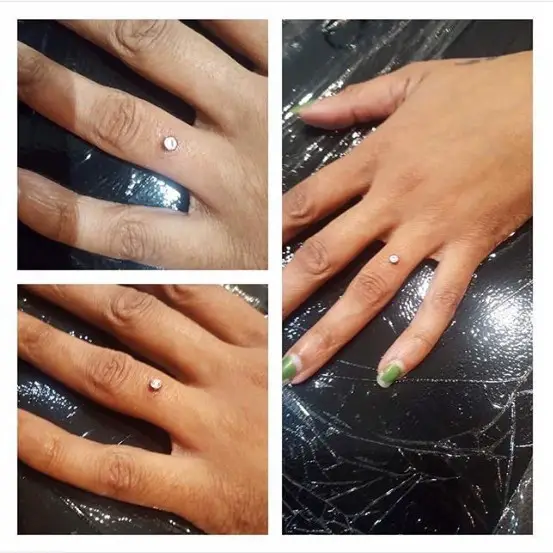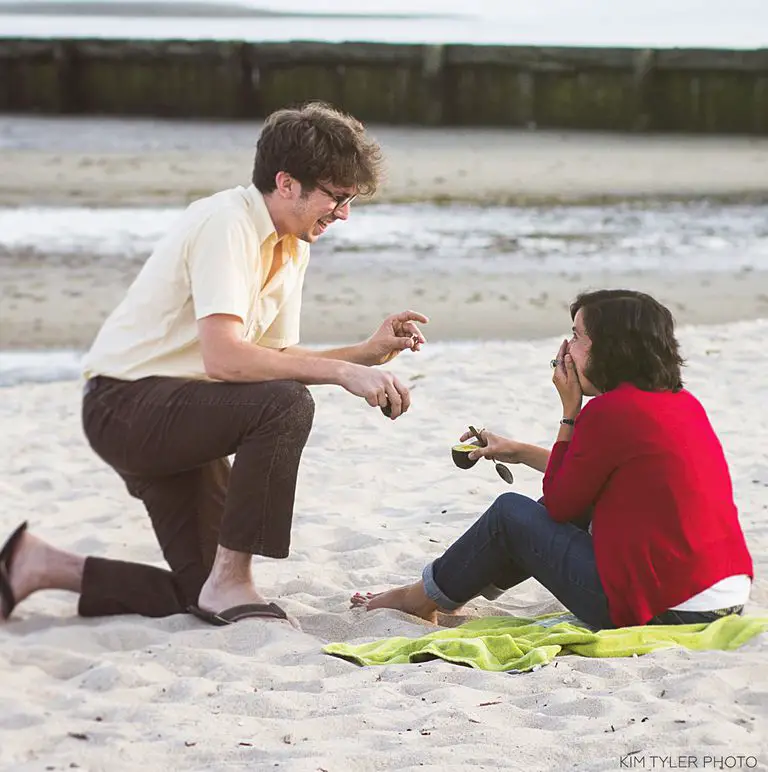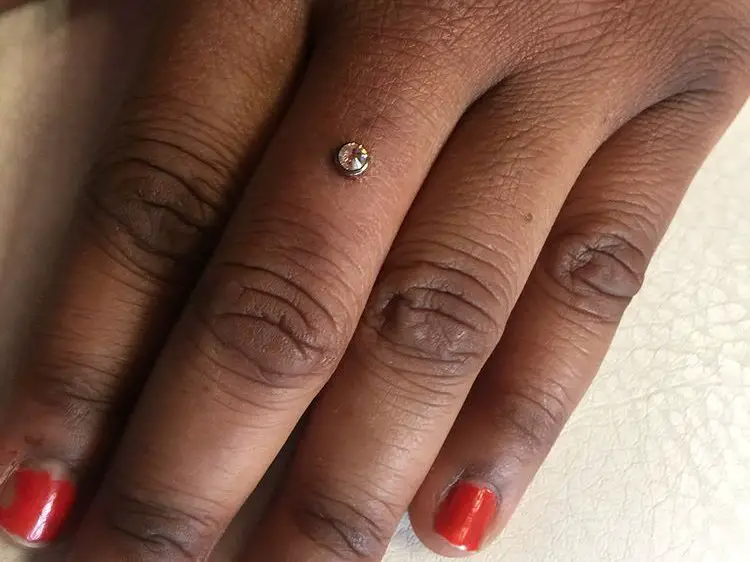A wedding is a highly individualized process. In my lifetime, I’ve seen just enough episodes of “Say Yes to the Dress” — precisely three, that is — to know that. From the color, to the length, to the fit of the dress, it all has to be just right for the blushing bride and her family.
And of course, popular styles for wedding dresses have changed over time. The same goes for engagement rings, which have recently undergone their own shift. With the newest trend of engagement piercings, Beyoncé’s “put a ring on it” has turned into “put a ring in it.”
Lately, Instagram has been bursting with pictures of these piercings. Girls show off their hands in the classic “I just got engaged!” pose; however, instead of having a diamond sitting atop a ring, they’ve got a diamond piercing in their ring finger.
The actual process is apparently quite simple. A dermal punch removes a small piece of flesh from the finger. Then the anchor, made of titanium or gold, goes under the surface of the skin and acts as a sort of screw, while the stone sits atop the finger. In effect, it looks like the ring is floating just above the skin.
These dermals, unlike earrings and other lobe piercings, do not have clear points of entry and exit. Rather, the exit and entrance point are one in the same. While engagement piercings are getting the most attention, dermal piercings in general are more common than you might realize. They can be done on many parts of the body, such as the cheeks, back dimples and collarbones.
Just as some women receive rings with multiple stones, so too are millennials showing off fingers with multiple piercings. Even cooler, the stones atop the anchor can be interchangeable. “With the base being anchored into place under the surface of the skin, the tops are interchangeable with a huge variety of colors, shapes and designs,” professional body piercer Billy DeBerry told People Magazine.
Switching out the stones takes a matter of seconds and is a doctor-less procedure.

Most women can’t say that they have exchanged one engagement ring for another over their lifetime. In this way, engagement piercings allow for a sort of variety that is otherwise financially difficult to achieve.
In addition, it’s simply easier to get a piercing than it is to get a ring, at least financially. Typical engagement rings go for around $5,000. In contrast, engagement piercings are far cheaper, although the cost does vary based on which stone goes in the finger.
Talk of this new trend is ramping up. The majority of the talk, however, revolves around the potential hazards of getting the piercings. Piercing experts from all over are adding their voices to the conversation, and most of them are concerned.
To start off, there is the possibility of the body rejecting the piercing. “It doesn’t work for everyone,” said Sarah Perez, a Los Angeles piercer. “It is sometimes rejected or migrated by the body.” Perez recommended carefully following after care instructions to reduce the risk of this happening.
Given their locations, engagement piercings come with a certain level of risk. In fact, compared to piercings elsewhere on the body, dermals on the fingers may be the most dangerous type of piercing. According to Cassi Lopez, a pioneer at a tattoo and piercing shop in the city called New York Adorned, this type of dermal is an “accident waiting to happen.”
“Think about everything you do with your hands, like reaching into your pockets, putting on gloves, or wiping yourself after you go to the bathroom. There’s a huge chance of not only rejection and tearing, but a serious infection,” Lopez explained. In the case of an infection, the anchor and the ring would need to be professionally removed.
With anything that goes on the fingers, there’s also the reasonable concern of snagging. Our hands are some of the most mobile parts of the body; with only a snag on a piece of clothing, a towel or a glove, the body could reject the ring and leave the area prone to scarring.
“Most viral [piercing] trends don’t go into detail about the healing process, the discomfort, and the possible long term effects of doing these things to your body,” Adrian Castillo, professional piercer, told Teen Vogue.
Nevertheless, engagement piercings are on the rise among young people. This new take on engagement rings isn’t the first time millennials have flipped the normal proposal process on its head. Earlier this month, avocado proposals started going viral. Nothing says love like getting down on one knee with a mushy green fruit, am I right?
In early February, food stylist Colette Dike posted an Instagram photo of an open avocado, which Today comically labeled the “avo-box,” with a shining engagement ring inside. “Tag someone who should propose like this,” she wrote. The picture got over 11,000 likes.
Of course, as with all the best crazy suggestions on Instagram, people took it seriously. Hundreds of photos now circulate the site with the hashtag #avocadoproposal. “Every hippie girl’s dream proposal,” user mindful_af wrote.
My personal favorite photo is one by professional photographer Kim Tyler. At a beach in Connecticut, she was shooting a different subject when she saw the proposal going on behind her and managed to snag the perfect shot.

The woman, Kimberlee Brosnan, looks ecstatic as any proposal recipient should. She holds one half of the avocado and a spoon in one hand, her other hand over her mouth in surprise.
“We didn’t want [the avocado] to go to waste,” says Brosnan’s new fiance, Randy Gonzalez, “so we gave it to the hotel restaurant to keep in the fridge overnight and then had avocado toast with it the next morning.” Typical millennials.
As always, trends in the wedding world are evolving at a rapid pace. Most of it is down to millennials getting creative and changing up the game. By the time those of us in college start proposing, there might be ring tattoos or snapchat story engagements. But knowing how quickly trends change, who can say for sure?

















